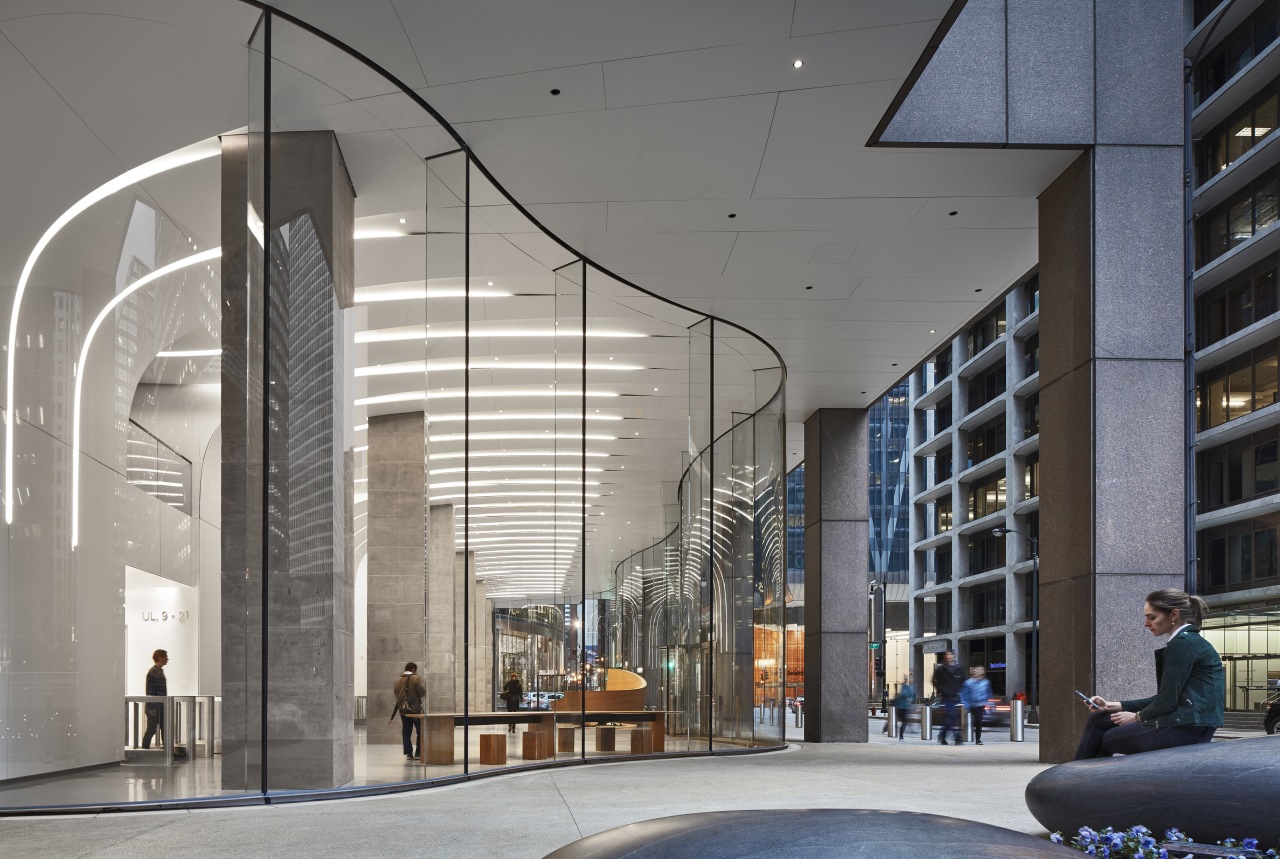Renovated lobby and greatly improved circulation path gives office building a new lease of life
The revamp of a tired, restrictive and utilitarian lobby in a prominent 30-year-old building has created a vibrant, freeflowing and transparent space that’s proved attractive to both tenants and a younger generation of workers

It’s often said that an office reception area, and the receptionist, are key to creating a visitor’s first impression of a business. But there’s another touchpoint before a visitor even reaches reception – whether the building itself is open and inviting, with clear entrances and circulation pathways.
At the CME Center in Chicago’s bustling West Loop, the building’s lobbies were starting to show their age after 30 years of use. Architect Mark Sexton of Krueck + Sexton Architects says they were functional but tired looking, while the lack of daylight created a dark, uninspiring experience.
They were also out of step with what tenants and their staff expected of a lobby these days.
“The days of staff being chained to their desks are gone,” says Sexton. “Buildings these days need a lot of community spaces – especially to attract and retain younger staff. So tenants want a building with more than just an empty lobby.”

What’s also changed is the requirement for higher levels of security after 9/11. At the CME Centre, as with most office buildings, this had meant implementing security checks and installing controlled turnstile access to elevators.
“This had actually sabotaged the whole circulation flow of the building – especially if you wanted to go between the building’s two office towers.”
Some movements even required exiting the building and then re-entering to complete a journey.
The initial impetus was to make the building continuously accessible on the inside for the 10,000 people who entered and exited it every work day.
“That led to our design for a sinuous curving storefront on the street side, made from 7.6m x 1.22m glass panels, all supported by glass fins. This pushes out beyond the original lobby footprint adding about 280m² of new space.
“The expanse of glass also improves the interior-exterior connectivity, and reduces the separation between commuters and the building’s services.”

To retain the solid, sturdy essence of the building, the original concrete columns were left exposed and complemented with a terrazzo floor.
“Countering that, we designed a wall system that folded into the ceiling. The 9300m² of tough Krion panels were prefabricated in Spain – accurate to 1.6mm – then shipped and assembled on site.”
Slots between the panels contain the concealed sprinkler system, lighting, security and other services.
With the addition of seating and a reception/security desk designed like a major artpiece, the revamped lobby not only provides the building with a highly attractive and light-filled community space, it also visually and physically engages with the 100,000’s of pedestrians that pass by on the way to and from nearby commuter railway stations.
Credit list
Project
Construction
Mechanical and electrical engineer
Fire consultant
Glazing system
Lift services
Flooring
Architects
Civil engineer
Landscaping
Wall and ceiling panels
Security system
Escalator services
Lighting
Story by: Paul Taylor
Photography by: Kendall McCaugherty @ Hall+Merrick
Home kitchen bathroom commercial design
Connected to the ocean
Masculine meets mixed use
Contrast and connection
Commercial Design Trends 35-2C
The world of hotel design is changing, with a move away from bland repetition of a chain’s design template to giving gue...
Read More










